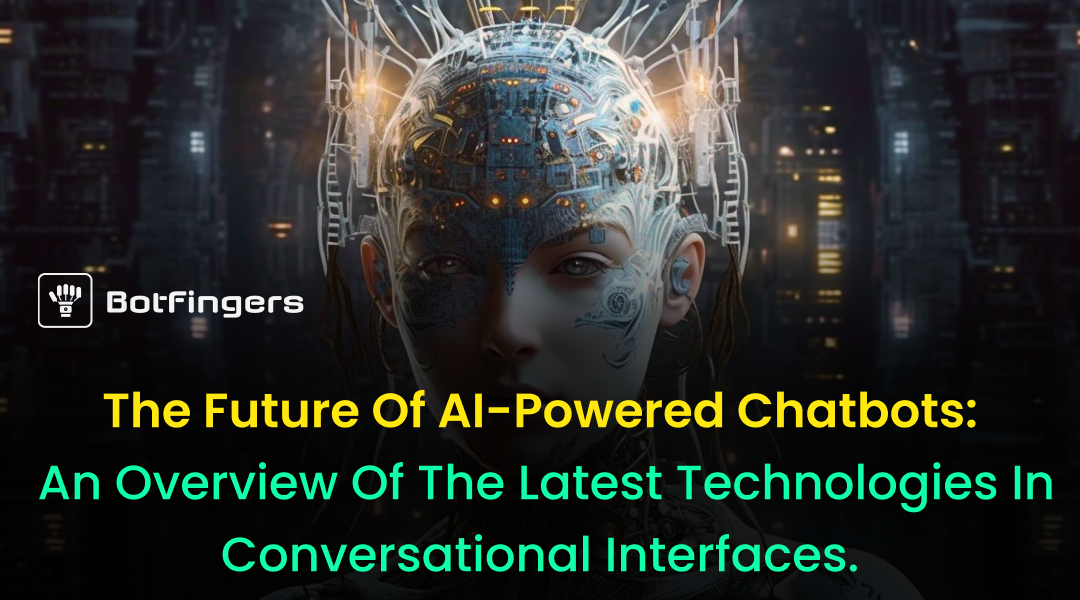Chatbots powered by AI are computer programs that replicate human-like discussions with users. They use artificial intelligence (AI) algorithms and natural language processing (NLP) approaches to interpret and reply to user questions. AI-powered chatbots are designed to deliver efficient and personalized customer service, automate tedious processes, and increase user engagement.
Because of their capacity to expedite customer interactions, improve operational efficiency, and increase customer satisfaction, chatbots have grown in popularity across industries. They are commonly used in e-commerce, healthcare, banking, customer service, and other industries. AI-powered chatbots give organizations a cost-effective way to handle massive numbers of enquiries, provide quick responses, and provide consumers with personalized experiences.
Evolution of chatbot technology
Initially, chatbot technology was built on rule-based systems. To generate answers, these systems used established rules and patterns. They needed more capabilities and could only answer particular orders or questions, not understanding context or engaging in genuine dialogue.
Chatbots got increasingly complex as AI and NLP advanced. Thanks to AI algorithms, chatbots may now learn from human interactions, analyze linguistic trends, and deliver more contextually appropriate responses. Natural language processing (NLP) approaches enable chatbots to interpret and analyze natural language, including sentiment and intent analysis.
Machine learning was critical in the development of chatbot technology. Chatbots first used machine learning algorithms to improve language understanding and response production. Chatbots might learn from enormous datasets, adapt to user preferences, and continuously improve their conversational talents using machine learning.
Current state of ai-powered chatbots
AI-powered chatbots are already being integrated into popular messaging platforms and websites, allowing businesses to participate in real-time interactions with customers. They are available on platforms like Facebook Messenger, WhatsApp, and Slack and embedded within company websites, providing quick assistance and support.
AI-powered chatbots can now engage people in more realistic and human-like discussions. They can comprehend complex queries, manage numerous intents, and respond appropriately. Chatbots can identify user emotions and alter their responses using sentiment analysis, improving the overall user experience.
AI-powered chatbots have gotten better at tailoring conversations based on user preferences and previous interactions. They can recall user history, evaluate data patterns, and offer personalized recommendations or support. Chatbots can employ contextual understanding to sustain coherent dialogues, recall user context, and deliver relevant information or answers.
Latest technologies in conversational interfaces
The growth of voice assistants like Amazon Alexa, Google Assistant, and Apple’s Siri has given rise to voice-enabled chatbots. These chatbots use automatic speech recognition (ASR) and text-to-speech (TTS) technology to recognize spoken language and answer by voice. Chatbots that can be spoken to provide hands-free interactions and a more natural conversational experience.
Chatbots now have sentiment analysis and emotion identification skills to enable more compassionate and tailored interactions. Chatbots can alter their responses based on the tone and attitude of user inputs, demonstrating empathy and understanding human emotions.
Making Use of Dialog Management Contextual chatbots use dialogue management strategies to keep dialogues logical. They can recall the sequence of past contacts, comprehend user context, and respond appropriately. Thanks to dialogue management, chatbots can handle multi-turn conversations, ask clarifying questions, and offer correct and meaningful responses.
AI-powered chatbots continue to improve, giving increasingly complex features and capabilities by harnessing the newest technologies.
Benefits and applications of ai-powered chatbots
Customer service and participation
AI-powered chatbots have transformed customer service by providing immediate and tailored assistance. These chatbots can handle a wide range of consumer enquiries, from basic FAQs to sophisticated difficulties, and they are available 24 hours a day, seven days a week. AI-powered chatbots provide efficient and consistent help by understanding natural language and context, increasing customer happiness and engagement.
Productivity-boosting virtual assistants
Chatbots powered by AI act as virtual assistants, assisting individuals and organizations in increasing productivity. They can make appointments, issue reminders, provide information, order things and make reservations. Chatbots free up human resources by automating monotonous and time-consuming operations, allowing them to focus on more value-added activities and thereby enhancing total productivity.
Lead generation and sales
AI-powered chatbots have evolved into significant sales and lead-generation tools. They can communicate with potential consumers, answer questions, and recommend products depending on user preferences. Chatbots can also collect user data, such as contact information and purchase habits, which can be used in targeted marketing campaigns. Chatbots help to enhance conversion rates and sales by engaging users in customized dialogues.
Challenges and future outlook
As AI-powered chatbots get more sophisticated, ethical concerns and data privacy become critical considerations. It is critical that chatbots protect user privacy, manage sensitive data securely, and adhere to any legislation. Transparency in data usage and securing user agreement are critical to establishing confidence and upholding ethical standards in developing and implementing chatbot systems.
AI-powered chatbots must be constantly improved and self-learning to remain relevant and effective. Developers must spend in improving algorithms, improving natural language processing, and training chatbots with massive volumes of data. Chatbots can continually learn from user interactions and improve their responses over time by employing machine learning techniques, providing more accurate and helpful support.
AI-powered chatbots’ future lies in their integration with other AI technologies. Combining chatbots with speech recognition, sentiment analysis, and emotion detection can enable more sophisticated and context-aware dialogues. Integration with machine vision and natural language understanding can help chatbots engage across many modalities and create richer user experiences.
Conclusion
The influence of AI-powered chatbots may be found in various industries, including e-commerce, healthcare, banking, and others. They improve client experiences and operational efficiency by streamlining processes. Chatbots are gradually integrated into our daily routines as they simplify work, increase productivity, and provide instant support.
Because of the quick improvements in AI-powered chatbots, organizations and individuals must stay current with changing technologies. Embracing innovations guarantee you can fully utilize chatbot capabilities and respond to changing client expectations. By staying educated, businesses gain a competitive advantage and provide excellent customer experiences in an AI-powered world.

